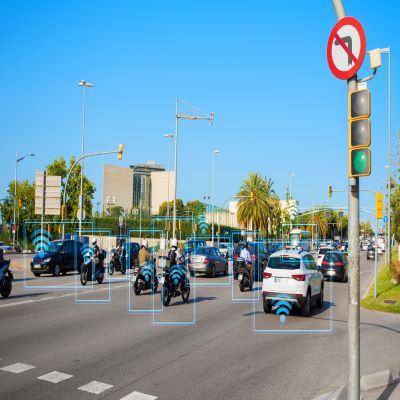|
|
 |
Autoblog
GM and its new EV business unit BrightDrop are launching a fleet charging service branded Ultium Charge 360.
The business unit offers commercial customers — starting with FedEx — an ecosystem of electric and connected products. BrightDrop has said it will begin with two main products: an electric van called the EV600 with an estimated range of 250 miles and a pod-like electric pallet dubbed EP1.
The company looked at “how to put the right customer experiences together … you know, when you think about fleets these are cars that come home with employees for example, and we’ll have to help those companies and employees figure out charging in their home.”
Read the article at Autoblog.
|
The Car Gossip
Through the acquisition of the U.S. high-tech mapping company Carmera Inc., Toyota Motor Corp. expects to get a boost in its pursuit of higher-level autonomous capabilities in the next several years.
Toyota’s in-house automated-driving subsidiary Woven Planet and Carmera have been working on projects together since 2018. Those collaborations laid the groundwork for the acquisition. Carmera’s technology melds existing inexpensive camera technologies to automatically record and upload changes to the highways and byways as vehicles drive by.
Read the article at The Car Gossip.
|
InsideEVs
In 2021, automakers are producing more plug-in hybrids than ever. With a highly saturated market, there’s plenty of options available.
2021 Toyota RAV4 Prime: Electric Range 42 Miles. The Prime can go 42 miles on a single charge, making it the longest range PHEV crossover. It also has a 302 horsepower total output, which can get the Prime to sixty 5.7 seconds. Plus, it’s AWD as standard, and overall, the RAV4 Prime is the most solid option for plug-in hybrid crossovers.
2021 Chrysler Pacifica Hybrid: Electric Range 32 Mile. A plug-in hybrid minivan is excellent for many reasons, but the most evident is that most in-town driving will be on electric power, and road trips can be on gasoline. With a 520-mile range and the versatility of utilizing both gasoline and electric propulsion, the Pacifica Hybrid may be one of the best new minivan options.
Read the article at InsideEVs.
|
Car and Driver
If an automaker wanted to convert people from EV skeptics to EV evangelists, it’s hard to imagine a better vehicle for the job than the Ford Mustang Mach-E. It arrives in the familiar shape and size of the crossovers Americans love, at a price that competes with gas-powered alternatives, and with a design that gets noticed.
The Mach-E has the range and charging speed to wave off the most common EV criticisms, and thanks to Electrify America’s recent work, there’s a nationwide charging network that makes long interstate trips not just possible but tolerable.
Best of all, the Mach-E is fun. It moves us past the argument that we should drive EVs because they’re better for the environment and proposes a simpler, more fundamental truth: EVs can be as rewarding to drive as their gas counterparts.
Read the article at Car and Driver.
|
|
|
|
|

CNN Business
A lot of people still think that, once a car has been driven more than 100,000 miles, there’s not much value left in it. That hasn’t really been true for decades, but it’s especially wrong now.
Used car prices have been driven to extremes recently thanks to a combination of demand from consumers wary of taking public transportation and a major shortage in the computer chips needed to make new cars. That superheated market is pushing prices higher, even for cars and trucks with six-digit mileage.
Trucks are showing the biggest increases, something that’s true among used vehicles of all ages and mileages. Average values for Chevrolet Silverado 1500 pickups with over 100,000 miles on them increased almost 50% to $27,000 while Ford F-150s of similar age are now worth roughly $26,000, a 43% increase. (These are retail used vehicle values — in other words, what a dealer could sell these trucks for. An owner selling the vehicle directly to another person or to a dealer should not expect to get quite that much.)
Read the article at CNN Business.
|
 |
|
| |
Fleet and Human Connection
|
|

By Steve Bender, CEO, Fleet Street Remarketing
Heading into 2021, everyone here at Fleet Street – and most likely many of you reading this – was feeling the unfortunate effects of the Covid pandemic.
From devastating business interruptions to uncertainty about the well-being of friends and family, 2020 was a roller coaster full of wild ups and downs. Perhaps worst of all, most of us were forced to go without the vital human connections we all covet as important industry gatherings and trade shows were canceled, business travel curtailed, and the world hunkered down in hopes of staying safe, healthy and Covid free.
And while a year that started out with so much promise ultimately turned out to be an incredible challenge, it appears as though we’ve turned the corner and life is returning to normal.
READ MORE
|
|
| |
Safety and Connected Vehicles
|
|

Medium
There are millions of connected vehicles on the road today, and Ford sees an opportunity to provide a more holistic view of what is happening on city streets with the most up-to-date information on where collisions or incidents occur via connected vehicle event data.
Since late 2020, Ford has been working with Michigan State University (MSU) on an ongoing research project to analyze existing connected vehicle event data, which captures insights around harsh acceleration, harsh braking, and harsh turns, against crash data from 2015–2019 in Southeast Michigan.
At a minimum, Ford and MSU researchers found that connected vehicle event data can be a strong compliment to the existing crash report data, serving as a second source to confirm previous findings or intuitions. The results of this research also point to the prospect of connected vehicle event data being able to inform up to date decision making to potentially help cities save time, money and most importantly, act on hotspots sooner to potentially save lives on the roads.
Read the article at Medium.
|
 |
|
|
|

